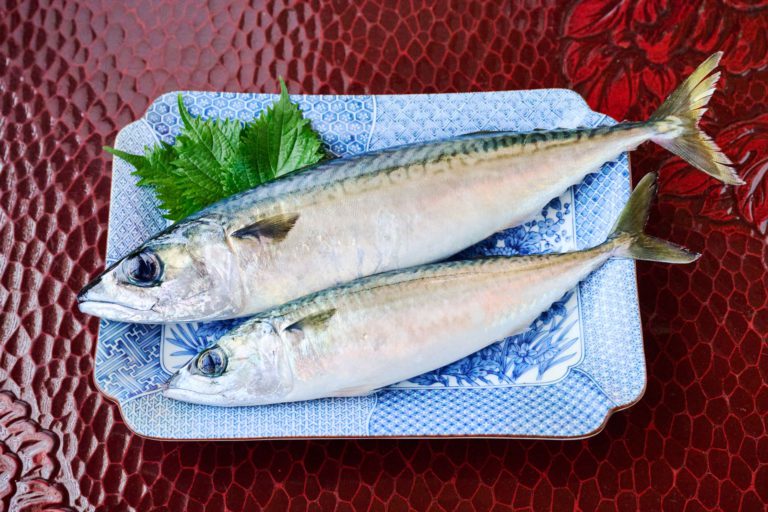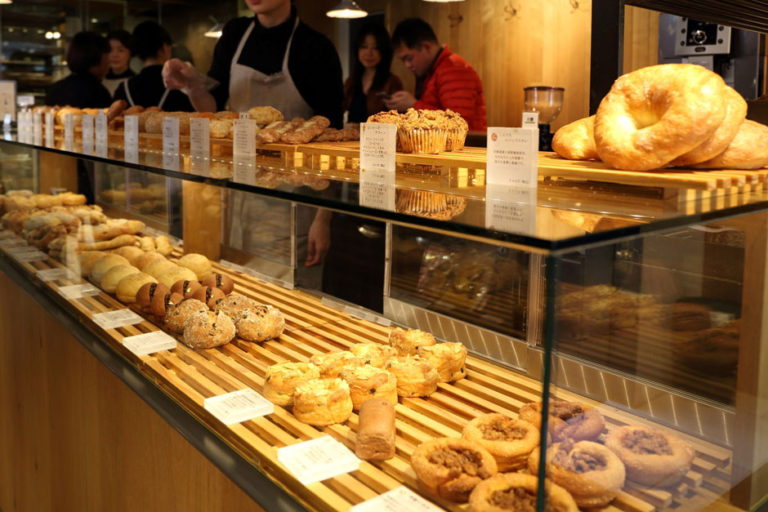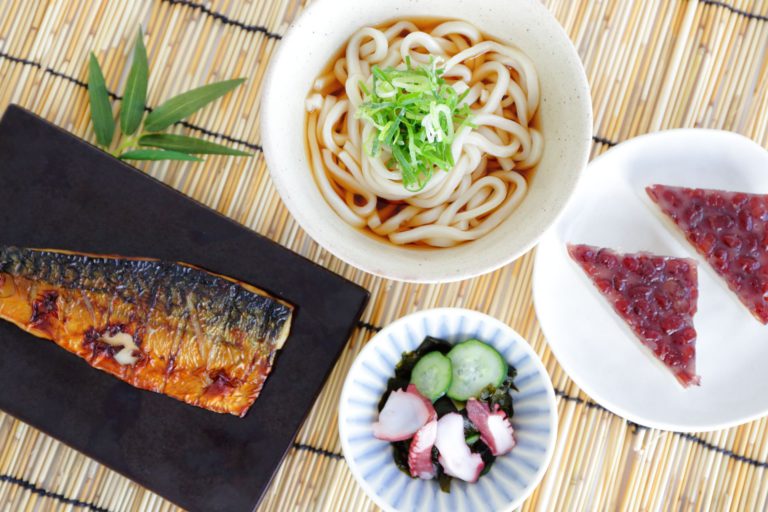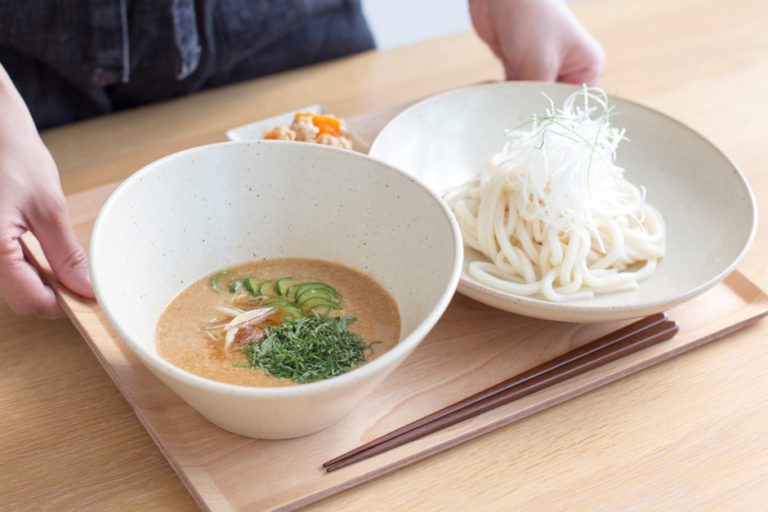Culinary Culture that Characterizes the People of Shodoshima
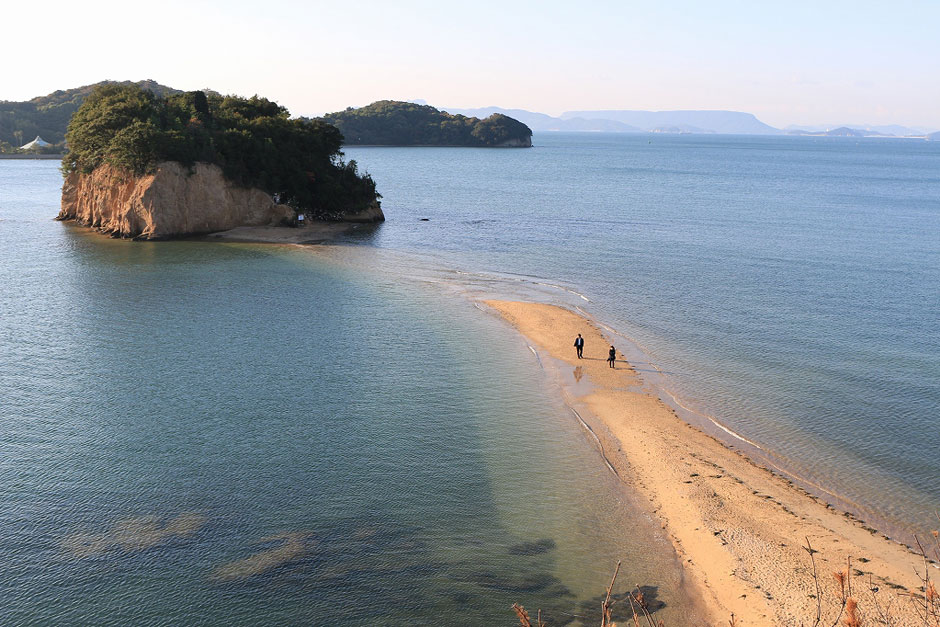
Shodoshima is renowned for being the birthplace of Japanese olive cultivation, however prior to that, the island thrived thanks to soy sauce and somen noodle production. These industries have a tradition that stretches back more than 400 years, into the Edo Period. We explored the long-established culinary traditions of the island of Shodoshima that continue today.
The Uniqueness of Shodoshima was the Basis for Soy Sauce Production
Shodoshima’s soy sauce industry began as a result of the salt production which flourished long ago. Salt was evidently produced on the island since Japan’s Kofun Period (250-538 AD), and Shodoshima was long famous for the high quality of its salt. However, as the knowledge of salt manufacturing techniques spread across the country, by the Edo Period, the business suffered due to overproduction. At a time when the islanders wondered how they could best take advantage of their salt production, they became aware of soy sauce manufactured in the Kansai region, and they learned the techniques to begin to make it.
The Seto Inland Sea’s characteristic warm climate proved to be well-suited to cultivation of the yeast needed to produce soy sauce. Fortunately soya beans and wheat were also readily available, thanks to the active shipping business, helping soy sauce production to become a key industry for the island.
Soy Sauce Production based on Tradition and Culture
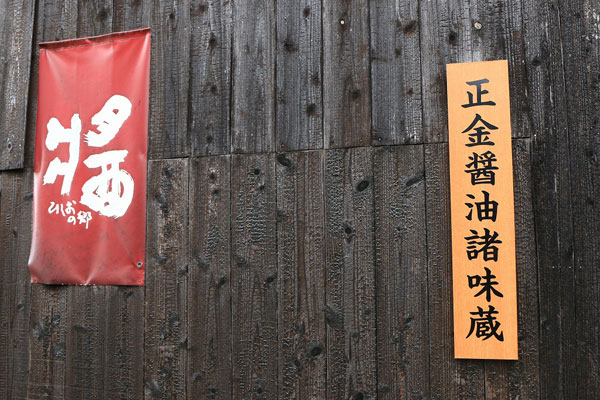
At one end of Shodoshima lies an area known as Hishio-no-Sato (“soy sauce village”), filled with soy sauce makers and tsukudani (soy pickle) makers. The area, popular with tourists, is filled with the rich aroma of soy sauce that emanates throughout, originating from the black timber-clad soy sauce breweries that line the streets, creating a somber scene.
We visited the premises of Shokinshoyu, a soy sauce manufacturer established in 1920. The wooden buildings exude an aura of the history, and when we stepped inside, we were overwhelmed at the sight of the two-meter-high casks. In Shodoshima, soy sauce continues to be produced using the traditional kogashikomi method that employs cedar casks. We met Mr. Yasuhito Fujii, the managing director, who spoke with us about soy sauce production.
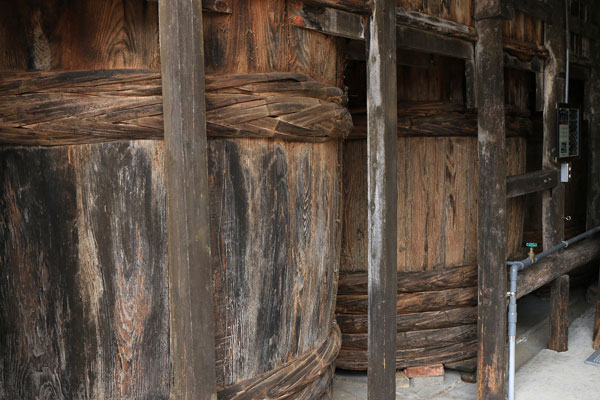
“The preparation of soy sauce begins with mixing the ingredients?wheat, soya beans and the malt-starter?to create malt. After salt water is added to the malt, it is placed in cedar casks to mature slowly. The finished soy sauce will differ slightly between casks despite the same preparation because the yeast in the cask varies according to the weather at the time.”
At Shokinshoyu, they use casks which date back to the time of the company’s founding along with other old cedar casks, employing a natural brewing process that relies on slow fermentation, without manipulating temperature and humidity. This is a slow and arduous method compared with general production techniques that control fermentation times by adjusting the temperature. But as Fujii explains, the unique taste of each cask’s soy sauce can only result from natural fermentation.
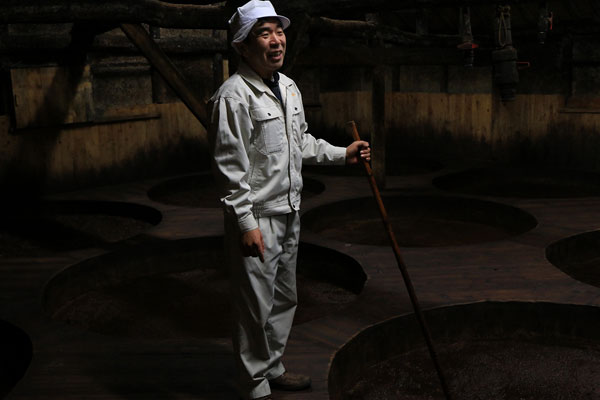
“Commencing production now, in the colder months from November to March, is known as ‘kanjikomi’ (cold preparation) and takes one year, with the peak of fermentation timed to occur in summer. Of course we cannot produce good soy sauce by just leaving it to chance. When I am concerned about the fermentation I even visit the brewery during the night to check its progress. With natural brewing, the soy sauce requires one summer to ferment, making kanjikomi necessary. In this method, the wheat, soya beans and yeast are blended slowly to produce a rich and aromatic soy sauce, making it the season for soy sauce.”
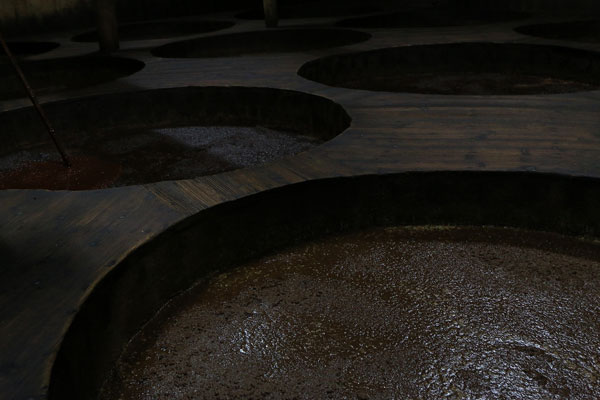
The naturally brewed soy sauce of Shodoshima could not exist without the climate and traditions of the island and the enthusiasm for manual production?it is part of the culinary culture of this place.
Shodoshima Somen Noodles and the Birthplace of Somen
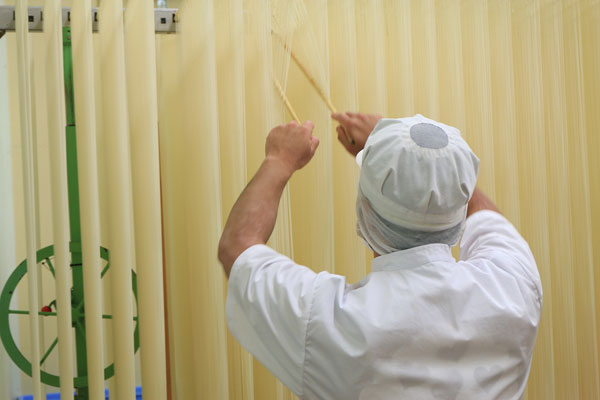
The Edo Period, when soy sauce was brought to Shodoshima, also witnessed the birth of another famed product of the island, which remains a key industry today?Shodoshima Somen.
Residents of Shodoshima first brought somen noodles to the island some 400 years ago during the Edo Period after encountering them at their birthplace, Miwa in Nara, while on pilgrimage to Ise Shrine. The visitors saw the noodle production technique and realized it would be an ideal side-industry for the island’s farming off-season. Residents travelled to Miwa repeatedly thereafter to learn the techniques for somen production.
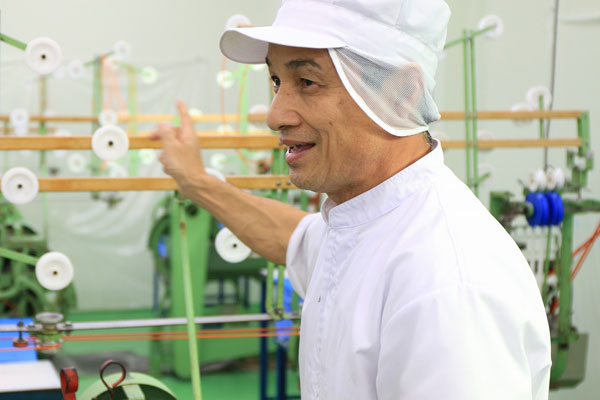
They brought their knowledge back to their island, leading to the development and spread of Shodoshima Somen. Somen production, which was begun thanks to the efforts of the island’s residents, was also assisted by its environment. As with the development of soy sauce production, the thriving shipping industry facilitated the acquisition of ingredients for somen, whose manufacture also benefitted from the island’s high quality salt and abundant water supplies.
The unique warm climate of the Seto Inland Sea is also said to be well-suited to somen manufacturing. We visited the factory of Kyoei Okano, which preserves the unique techniques of Shodoshima’s traditional hand-rolled noodle production.
Production at Kyoei Okano begins when a small number of staff commence the kneading process at 1:30 a.m. “Hand-rolled somen undergoes a maturation process as it is stretched. Because the state of the dough varies daily according to the weather, temperature and humidity, it is necessary to adjust the quantity of salt and water which is added. The task of judging the amounts requires many years of experience and intuition,” according to Mr. Motohama, the factory chief, who has worked in the business for nearly 30 years.
“From the beginning of production during the night, it takes around 10 hours to stretch the somen to the required length. It takes two days until the noodles are dried to create the finished product. It is this slow maturation that gives the noodles firmness.”
Motohama maintains an uncompromising attitude towards the firmness of the somen as he attends to his work each day. After trying various alternatives, Kyoei Okano now uses 100% Hokkaido-grown wheat for its main somen line. This is because Hokkaido wheat is best suited to produce the desired firmness and springy texture.
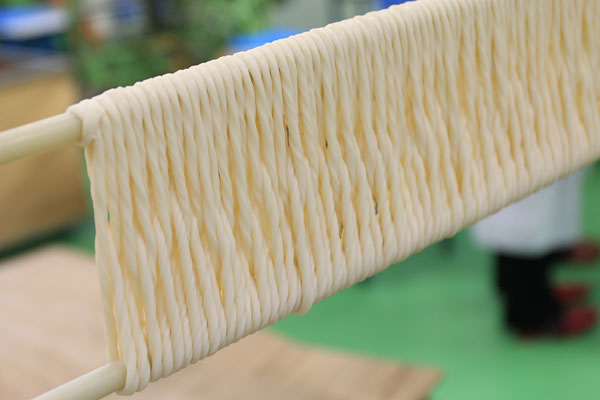
Shodoshima Somen, created through an encounter with somen production in Miwa, has grown to the point where it is renowned as among the top three hand-rolled somen varieties in Japan, along with Miwa Somen. It continues to develop thanks to the enthusiasm of the island’s artisans who have inherited the industrious attitude of their predecessors.
Shodoshima’s Adoption of Diverse Influences
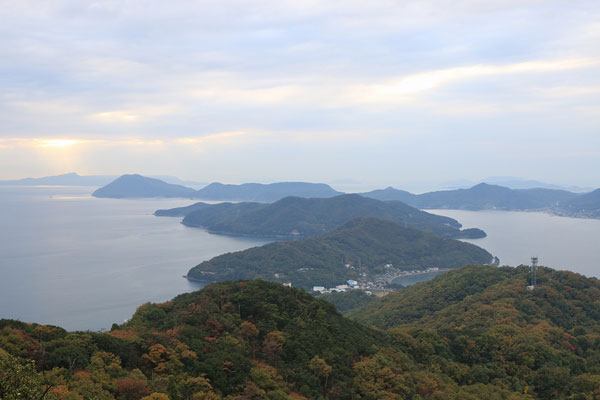
Both soy sauce and somen production were brought to Shodoshima from elsewhere and grew into key industries for the island. While the development of these industries was in part thanks to the suitability of the island’s climate, it was also partly due to the resident’s thirst for knowledge and their proactivity. Mr. Ishitoko, executive-secretary of the Shodoshima Tourist Association, who was our guide for this visit, gave the following explanation.
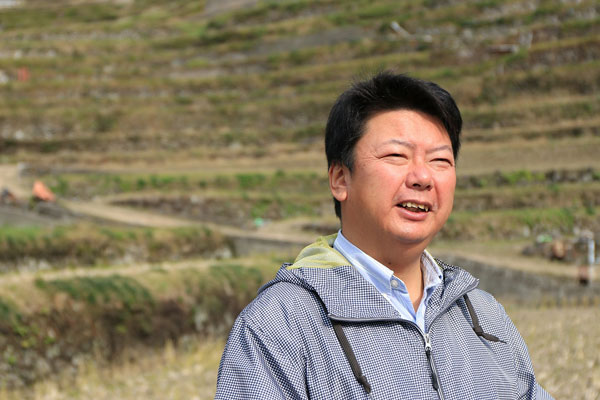
Both soy sauce and somen production were brought to Shodoshima from elsewhere and grew into key industries for the island. While the development of these industries was in part thanks to the suitability of the island’s climate, it was also partly due to the resident’s thirst for knowledge and their proactivity. Mr. Ishitoko, executive-secretary of the Shodoshima Tourist Association, who was our guide for this visit, gave the following explanation.
While it is true that these industries originated elsewhere, soy sauce and somen have both developed to become unique brand names for the Shodoshima. They were born of the flexibility of the island’s residents, who adopted traditions from elsewhere and made them their own, along with the steady efforts of these people and their unique climate. We can heartily recommend a visit to Shodoshima, where you can enjoy the island’s relaxing and kind-hearted atmosphere together with its unique culinary culture.

